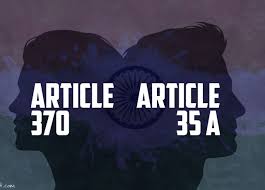Kapil Sibal asserts that the revocation of Article 370 was a political decision rather than a constitutional one. He explains that, under Article 356, the typical procedure involves keeping the legislative assembly in suspended animation. If it becomes apparent that the assembly cannot function effectively, Article 356 allows for its dissolution and subsequent elections.
The Chief Justice of India questions Sibal’s stance, suggesting that the dissolution of the assembly on November 25th was flawed due to the absence of proper advice.
Sibal counters by arguing that there was no need for invoking Article 356 because the administration was already functioning effectively, indicating that there was no constitutional breakdown.
The Chief Justice then raises the possibility that if the dissolution was indeed incorrect, the legislative assembly should have been reinstated after six months, and a council of ministers formed. He asks if, according to Sibal’s argument, the Government of India could have exercised power under Article 356 in such a scenario.
Sibal responds by stating that in such a situation, the governor would have had to recommend that the legislative assembly was not functioning in line with the Constitution, given that the governor had been in charge for six months.
In conclusion, Sibal contends that the revocation of Article 370 was primarily a political maneuver rather than a constitutionally justified action.

